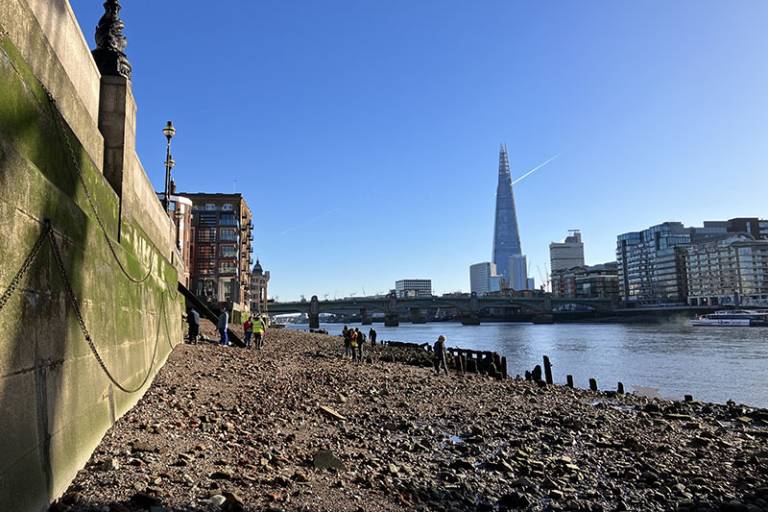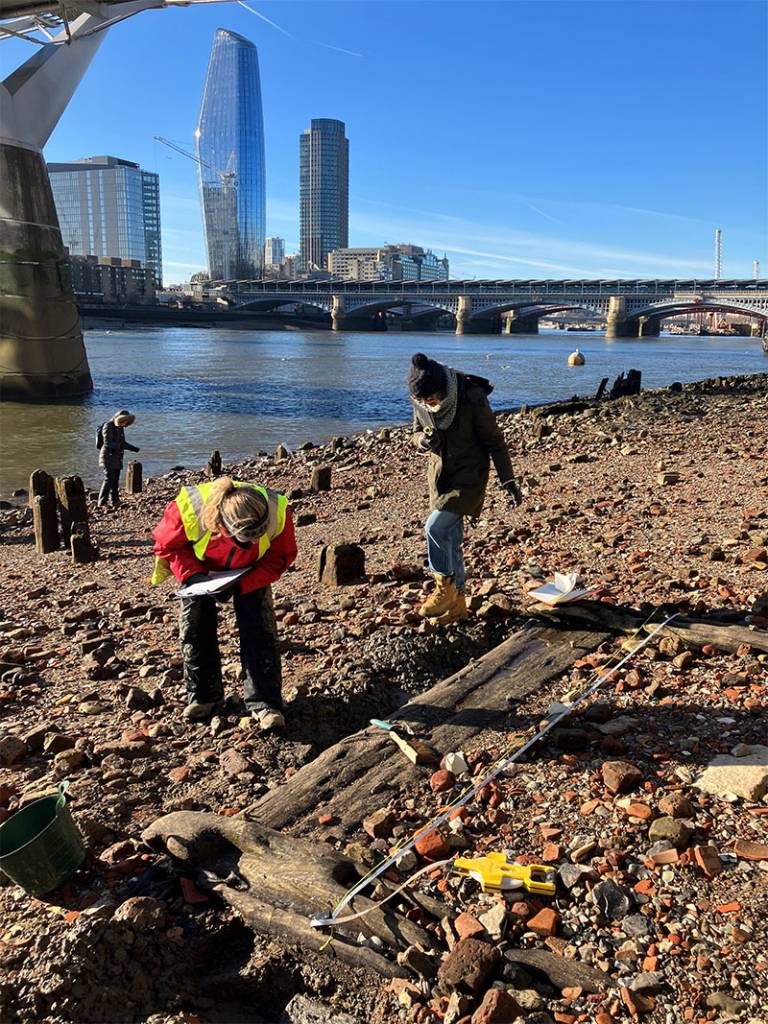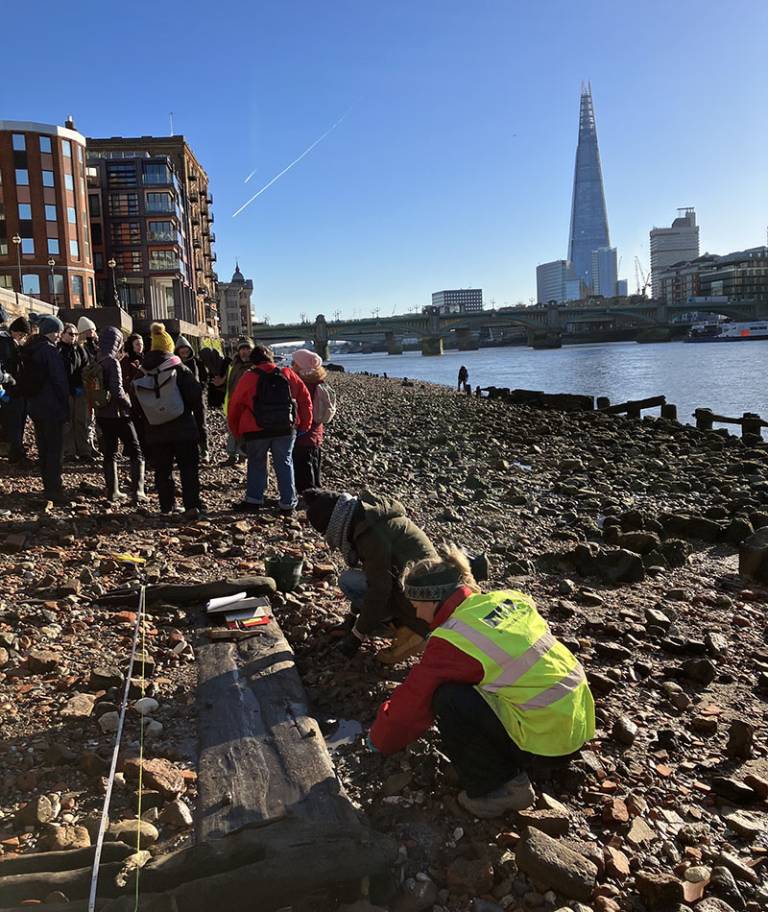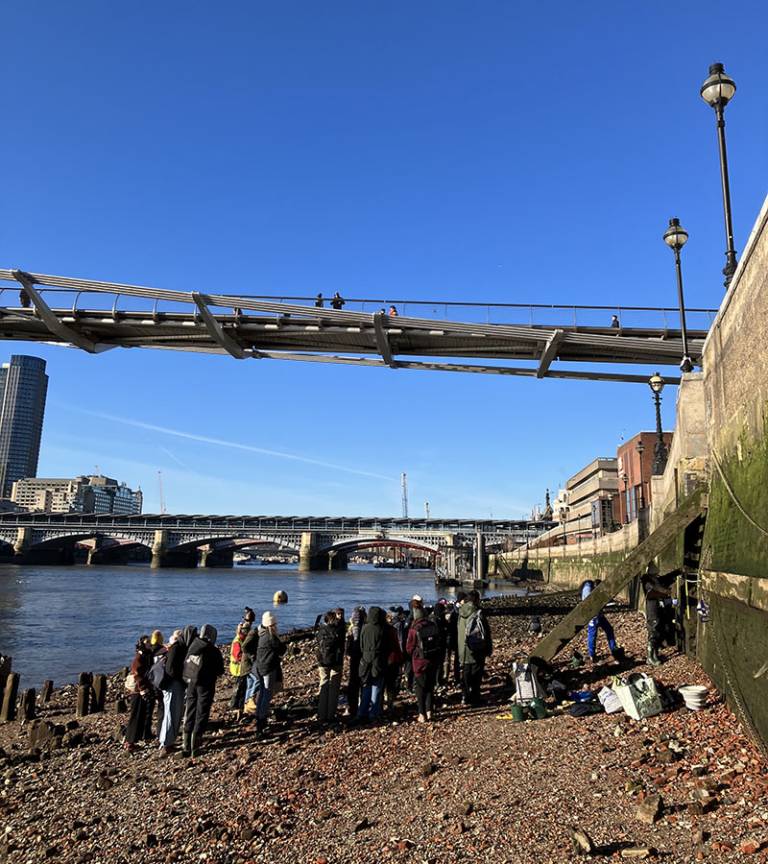London student fieldwork on the Thames foreshore
19 January 2024
UCL Institute of Archaeology students led by Stuart Brookes have commenced a programme of fieldwork along the Thames foreshore in central London.

In December 2023 a group of intrepid Institute of Archaeology students, led by Stuart Brookes alongside Institute colleague Charlotte Frearson (Fieldwork and outreach) and former staff and former lead on the Thames Discovery Programme and CITiZAN projects Gustav Milne & Angela Broomfield (Field Officer of the City of London Archaeological Society - COLAS), ventured down to the Thames Foreshore close to St Pauls and the Millennium Bridge.
The aim of this first session was to start an ongoing programme of fieldwork recording the archaeology of the Thames foreshore in the heart of the City of London, providing key skills training for the students.
According to Stuart:
“Work as part of the CoLAS / UCL Thames Archaeological Survey project is currently underway recording what remains of the public riverstairs and watergates on the Thames foreshore. In medieval times the City of London had thirty public riverstairs: today there are just three. These common watergates served many functions for Londoners, to collect water, do their laundry, wash themselves, water horses, or to use public tidally-flushed latrines. Particular occupations—such as fishermen or shipbuilders—for whom the foreshore was a daily workplace, also required access to the river. And it was here on the waterfront that produce brought to the City by boat could be bought or bartered, especially important in the 10th-12th centuries, when regular beach-markets took place on the open foreshore. Evidence for these many activities can be found surviving at low tide, and on days throughout the winter our students can be found recording these remains whilst also gaining valuable skills in the three-dimensional recording of intertidal archaeology."

Students and staff will continue working on the tidal Thames foreshore recording the timber river stairs visible at low tide during 2024. Work will involve cleaning the structures and carrying out preliminary drawing and recording but according to Charlotte, and as can be seen by the images, they made a very good start in December (and in -3 degree C temperatures!).
Fieldwork is an integral part of the undergraduate degree programmes at the Institute of Archaeology, with partially funded fieldwork opportunities being included, which contributes to the overall student experience. Read more about Institute fieldwork here.
- Contact Charlotte Frearson for more information about fieldwork opportunities.
Gina Hollaway (2nd year BA Archaeology student) said:
“Our time on the Thames foreshore has been one of my favourite types of fieldwork undertaken at UCL so far. Archaeology is everywhere and to be able to see relics of the past on our doorstep throughout the term is a great way to study the past in a small yet significant way. The archaeology of the Thames changes every 12 hours with fresh artefacts washing up on the shore every day and as the tide goes out, we can study the finds that are left behind. These can range from pottery fragments to large amounts of animal bones. Similarly, we also record features from the past, such as 17th century steps leading to the water’s edge to help paint a picture of the history of the Thames. Foreshore recording of the Thames is a perfect taste of the archaeology of London.”
 Close
Close



